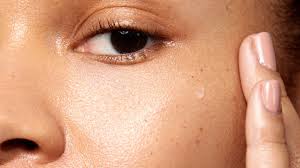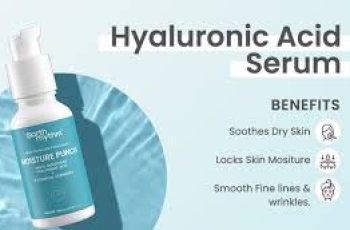
Can You Use Salicylic Acid Serum After LED Therapy?
LED, also known as red light therapy, is having a moment, especially now that easy to use devices are available to use at home, everyone is benefiting from the intense and impressive results. With LED therapy treatment helping to heal wounds, repair tissue and combating inflammation is it a good idea to use salicylic acid with it? Or could teaming it together be the answer to unbelievable skin results?
Well, let’s find out more and investigate if you can use salicylic acid serum after LED therapy.
Can you use salicylic acid with light therapy?
Yes, you can believe it or not! Salicylic acid and other beta hydroxy acids (BHA) are oil soluble and are able to penetrate deep into the lower layers of the skin. They can target blocked pores and remove any build-up of excess sebum, bacteria, dirt, debris, and other impurities. They also work at reducing inflammation and loosen the bonds holding dead skin cells to the surface of the skin. Teaming salicylic acid or BHAs with light therapy will work effectively at combating breakouts. Some find that salicylic acid can often be too potent for their skin, especially if they have a skin type that is dry and prone to sensitivity. For this, LED is favoured to effectively treat blemishes, without the drying results of salicylic acid.
Can you use LED light after chemical peel?
You certainly can, using LED light after a chemical peel is actually something many established salons have to offer. It is thought that teaming the two together will result in a vibrant, fresh complexion with little to no downtime.
LED light therapy started as a brainchild of NASA and Navy Seals with blue and red light used to help boost muscle generation which results in any surface wounds on the skin healing rapidly. With this form of method being completely painless and deliver such outstanding results, it was only a matter of time before the beauty industry liked the idea which proceeded to the LED therapy machine you are familiar with begin to pop up all over.
LED light therapy is an effective and non-invasive approach to combatting signs of ageing by stimulating the production of collagen and elastin which both play an important role in keeping the skin looking plumped and hydrated with a youthful glow.
As complicated as it may sound, teaming LED light therapy with a chemical peel is a safe and impactful way to target most common skin concerns, from hyperpigmentation, dark spots, first signs of ageing, such as fine lines and wrinkles and loss of elasticity to the skin.
Can I use LED light with retinol?
Yes, believe it or not you can use LED light with retinol. I completely understand how this may feel a little daunting due to the reputation that retinol carries of being highly potent on the skin. While retinol does come with a list of instructions on how to introduce it into your routine and build the skin’s tolerance, it is suggested that applying retinol to the skin after you use LED light will, this will keep any irritation or increase in skin sensitivity to a minimum impact on the skin.
For optimal results wait to complete your evening skincare routine, followed by a LED therapy session. After this wait for about 10 minutes before you apply your retinol product then head off to bed allowing the form of vitamin A to work its magic whilst you catch up on your beauty sleep.
I understand that is may sound pretty straight forward, but it’s very important you consult with a doctor, dermatologist, or trained professional before trying any new formulas or ingredients on the skin, this will avoid any unwanted irritation.
How often use red light therapy on face?
This is very much dependant on the skin concerns you are wanting to address, from combating uneven skin tone, minimising the appearance of fine lines and wrinkles, and healing long term sun damage. It is suggested that about 10–20-minute session 3-5 times a week over the course of 4 months will have the most impact and have a hugely notable difference to the complexion. There are several benefits when using LED therapy, partially the red light in the machine. Here are some of the main benefits you can expect,
Anti-ageing- the red light can stimulate the skin cells which is also known as fibroblasts, and these helps boost the collagen production of the skin. It can aid the skin to repair any damage and reduce the appearance of wrinkles and fine lines that occur on the skin. Over time you will find your complexion looks smoother and firmer to touch.
Heals wounds- as already mentioned, the red light helps stimulate the collagen of the skin. This highly effective for any surface wounds on the skin and many studies have shown any signs of redness are reduced, swelling and inflammation have calmed, and bruising is healed quickly.
You’ll find that teaming red light with blue makes a powerful skin duo that are able to combat an array of skin concerns, especially for any signs of inflammation and redness.
Do LEDS help acne scars?
Yes, it certainly does! Acne scarring occurs when blemishes are squeezed or popped forcing the skin surface to break, this small trauma will develop into a dark spot which will only become more pigmented with the sun exposure it has. Luckily, using LED light therapy you can repair any sun damage with regular sessions followed with a daily SPF of 30 and above. Other acne scars such as the pitted scarring that gives the face an uneven texture is also combatted thanks to the collagen stimulation resulting in a smoother, even, glowing complexion.
There you have some advice on how to use salicylic acid serum with LED therapy and a little more detail of the benefits you’ll experience when using LED therapy. Don’t forget to come and follow us on Instagram, and if you have any questions, or just fancy a chat about skin, you’ll find me there!


